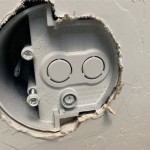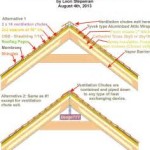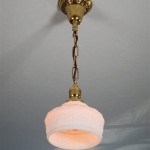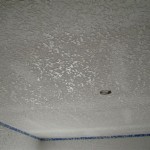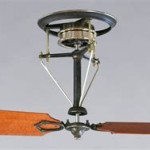Winterizing AC Return Vents in the Ceiling
As the weather transitions from balmy summer days to frigid winter nights, it becomes crucial to ensure your home is properly prepared for the colder months. One often overlooked aspect of winterization is the air conditioning (AC) return vent located in the ceiling. While typically associated with the cooling system, these vents play a significant role in maintaining a comfortable indoor temperature year-round. Failure to winterize these vents can lead to energy inefficiencies, drafts, and even potential damage to the HVAC system.
Why Winterize AC Return Vents?
Winterizing AC return vents in the ceiling is essential for several reasons. First, these vents act as a primary air intake for the HVAC system, drawing in air from the living spaces. During winter, unsealed return vent openings can allow cold air from the attic to be drawn into the system, reducing the efficiency of your heating system and increasing energy consumption.
Second, the cold air from the attic can also lead to drafts within the living areas, lowering the overall comfort level. Additionally, this influx of cold air can cause condensation to form within the ductwork, potentially leading to mold growth and damage to the HVAC system over time.
Finally, winterizing AC return vents also helps prevent potential damage to the attic itself. The cold air drawn in through the vents can lower the temperature within the attic, increasing the risk of freezing pipes and other structural issues, particularly in areas prone to extreme weather conditions.
Steps to Winterize AC Return Vents
Winterizing AC return vents is a relatively simple process that can be completed with minimal tools and effort. Here's a step-by-step guide to winterizing your ceiling AC return vents:
1. Assess Attic Conditions
Start by inspecting the attic space. Look for any signs of moisture or leaks, which could indicate potential problems that need to be addressed before winterizing the vents. Also, examine the insulation levels and ensure that the attic is properly sealed to prevent air infiltration.
2. Locate the Return Vents
Identify the AC return vents in your ceiling. These vents are typically rectangular or circular openings, and they might be accompanied by a grille or cover. Examine their condition and note any loose or broken parts.
3. Seal the Vents
The most effective way to winterize AC return vents is to seal them off completely. This can be achieved using a variety of methods, including:
- Removable covers: These are widely available at hardware stores and can be easily installed by snapping them onto the vent opening. They can be removed during the summer months when cooling is required.
- Heavy-duty plastic sheeting: A large sheet of plastic wrap can be taped over the vent opening to create a temporary seal. This method is cost-effective but might require more frequent replacement.
- Insulated vent covers: Designed specifically for winterization, these covers combine insulation and a sealed vent opening to prevent cold air infiltration.
Choose the method that best suits your needs and budget. Ensure the seal is tight and secure to prevent any air leaks.
4. Inspect Ductwork
Once the vents are sealed, it's also a good practice to inspect the ductwork connected to the vents. Check for any cracks, leaks, or damage that may compromise the system's efficiency. Consider sealing any identified gaps or leaks with duct tape or mastic sealant.
Additional Considerations
In addition to the steps outlined above, here are some additional considerations for winterizing AC return vents:
- Professional HVAC Inspection: For optimal results, it's recommended to have a professional HVAC technician inspect your system before winter. They can perform a thorough assessment, identify any potential issues, and ensure that your HVAC system is functioning efficiently.
- Maintain a Warm Attic: Maintaining a warm attic temperature can help prevent condensation and damage to the ductwork. Consider adding insulation to the attic floor or using a small electric heater to raise the temperature during extremely cold periods.
- Leave Vent Open During Humid Periods: In areas prone to high humidity, it's crucial to leave the AC return vent slightly open during periods of heavy moisture to prevent condensation buildup in the ductwork. This can be done by removing the sealing material or using a vent cover with a small opening for ventilation.
By following these simple steps and considering the additional points, you can effectively winterize your AC return vents, leading to a warmer and more comfortable home during the colder months while ensuring the longevity and efficiency of your HVAC system.

Winterize Your Home Hvac System Custom Comfort Llc

Don T Let Cold Air In How To Winterize Your Hvac System

Elima Draft Universal Hvac Insulated Bubble Foil Return Vent Cover Elmdftrb3433

Ac Draftshield 12 In X Vent Cover Ca1212 The Home Depot

Top 12 Signs Your Air Duct Needs Comprehensive Cleaning

Ac Draftshield 12 In X Vent Cover Ca1212 The Home Depot

Air Conditioner Ceiling Unit Duct Bypass 1999 Southwind 35s

Best Ways To Prepare Your Vents For The Winter Hvac Fort Wayne In

Newmar Rv Ceiling Vent Round Integrity Parts

Ac Draftshield 14 In X Vent Cover Ca1414 The Home Depot
Related Posts


